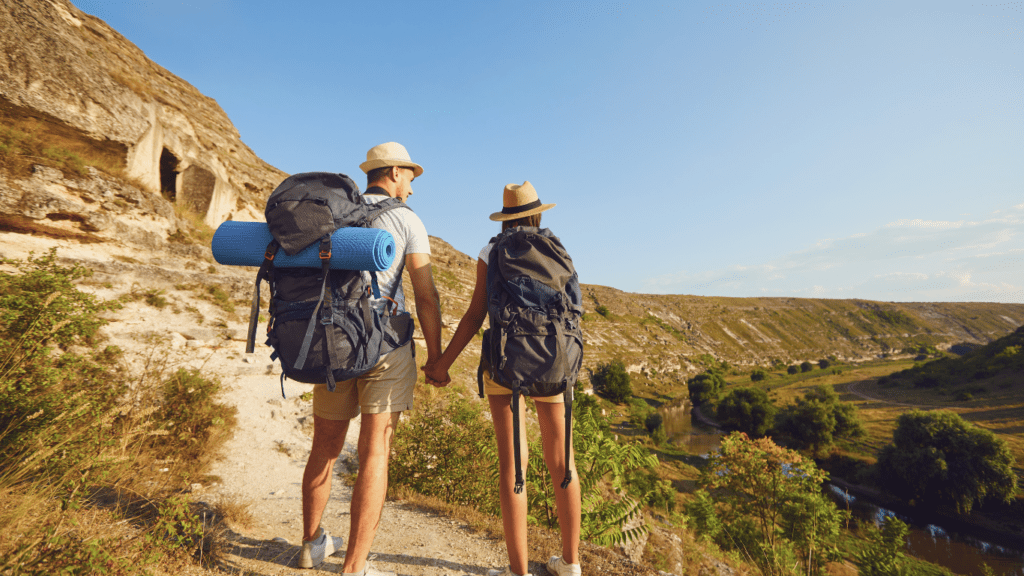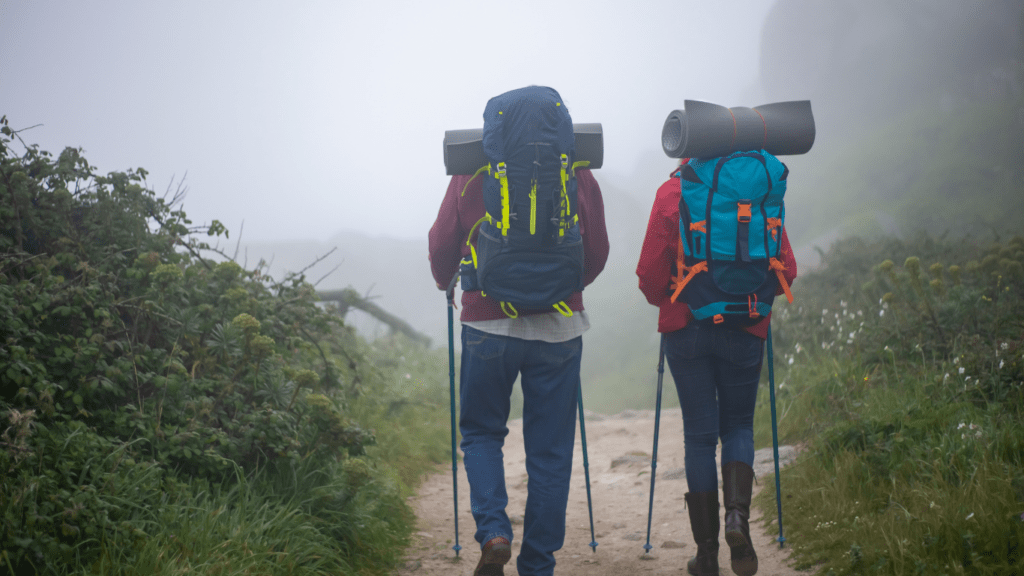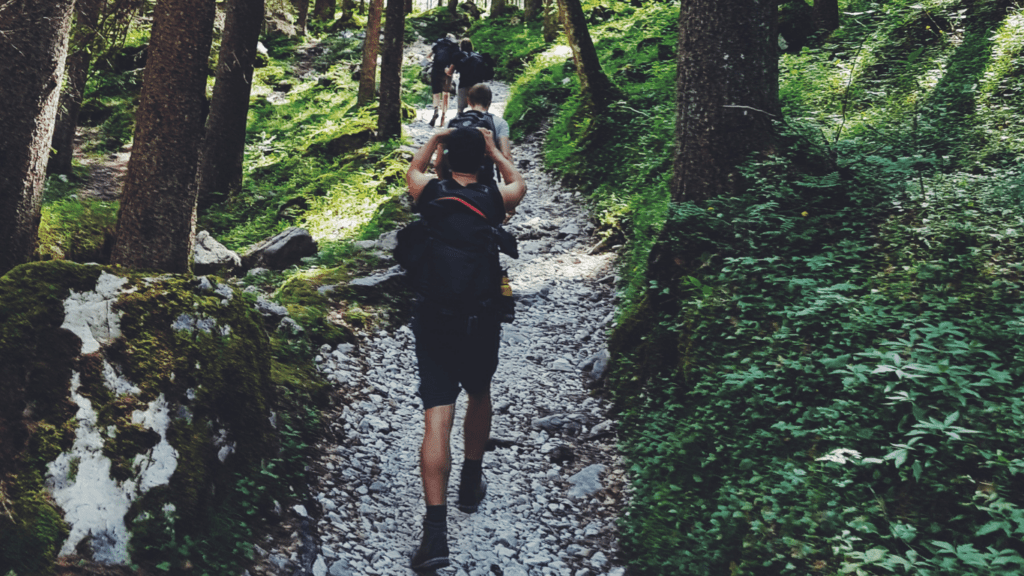Choose the Right Trail
Choosing the right trail is crucial to ensure an enjoyable and safe hiking experience. It involves considering your physical capabilities, understanding the trail conditions, and being aware of the weather.
Assess Your Fitness Level
Identifying your fitness level helps determine the appropriate difficulty of a trail. Consider the elevation gain, distance, and terrain type. Beginners might choose flat, short trails, while experienced hikers can opt for steeper, longer paths. Make sure to match the trail intensity with your fitness to avoid overexertion and potential injuries.
Research Trail Conditions
Knowing the current trail conditions prevents unpleasant surprises. Check recent reports or reviews from other hikers on platforms like AllTrails or local hiking forums. Look for information on trail maintenance, closures, or obstacles like fallen trees or flooded paths. Detailed research helps you prepare effectively for what lies ahead.
Check Weather Forecasts
Monitor the weather forecast for the day of your hike using reliable sources like NOAA or Weather.com. Knowing the expected weather conditions assists in deciding what gear to bring and whether it’s safe to hike. Pack accordingly for rain, snow, or extreme heat to ensure comfort and safety throughout your day hike.
Essential Gear and Clothing

Proper gear and appropriate clothing are crucial for a successful day hike. Below, I’ll detail the essentials you’ll need.
Footwear
Selecting the right footwear is critical for comfort and safety. Hiking boots or shoes should offer good ankle support and a firm grip. Waterproof options keep your feet dry in wet conditions. Try different models, and wear them for short walks first to ensure they fit well. Look for brands like Merrell, Salomon, or Keen, known for their quality.
Clothing Layers
Layering helps regulate body temperature and provides flexibility. Start with a moisture-wicking base layer to keep sweat off your skin. Follow it with an insulating layer such as fleece for warmth. Finally, add a waterproof and windproof outer layer to protect against rain and wind. Patagonia, Columbia, and Arc’teryx have reliable options for each layer.
Daypack Essentials
A well-packed daypack ensures you’re prepared. Include the following items:
- Water: At least 2 liters, plus a portable water filter like Sawyer Mini.
- Food: High-energy snacks, such as trail mix, energy bars, and fruits.
- Navigation: Map, compass, and a GPS device; apps like AllTrails can be useful.
- Safety Gear: First aid kit, multi-tool, and a whistle for emergencies.
- Weather Protection: Sunblock, sunglasses, and a hat.
- Lighting: Headlamp with extra batteries in case the hike extends into the evening.
- Extras: Lightweight jacket, insect repellent, and a small towel.
Ensuring you have these essentials and layering strategically can make your day hike safer and more enjoyable.
Nutrition and Hydration
Proper nutrition and hydration are crucial for a successful day hike. Ensuring energy levels remain high and avoiding dehydration can significantly enhance the hiking experience.
Meal Planning
For day hikes, balanced meal planning keeps energy levels stable. I recommend a mix of complex carbohydrates, proteins, and healthy fats. Whole grain sandwiches, lean meats, cheese, and avocado make nutritious choices. Include fruits like apples or bananas for quick energy. Pre-packaging meals in lightweight containers saves space and minimizes waste.
Hydration Tips
Staying hydrated is vital. I suggest carrying at least one liter of water for every two hours of hiking. If the trail has water sources, bring a portable filter or purification tablets to refill safely. Cold temperatures can disguise dehydration, so drink even if not thirsty. Adding electrolyte tablets or powders to water helps replace lost salts and minerals.
Lightweight Snacks
Compact, high-energy snacks provide a quick fuel boost. I pack trail mix with nuts, seeds, dried fruit, and dark chocolate. Energy bars and granola bars are convenient options. Jerky offers protein with minimal bulk. Consider bite-sized, easily accessible snacks to munch on the go without stopping.
Safety Measures
Staying safe on a day hike requires proper preparation. Here’s how to ensure you’re ready for any situation.
First Aid Kit
Carrying a first aid kit is crucial for any hike. Include adhesive bandages, antiseptic wipes, gauze pads, and medical tape. Add blister treatment, tweezers, and pain relief medications for minor injuries or discomfort. Customize the kit based on the hike’s duration and your group’s needs.
Navigational Tools
Navigational tools are essential for staying on the right path. A map and compass provide reliable guidance when GPS fails. Train with both tools before the hike. A fully charged GPS device or smartphone with offline maps can offer additional security.
Emergency Contacts
Having emergency contacts ensures help is available if needed. Share your hiking plan with a friend or family member. Include your route, expected return time, and key details. Save local emergency numbers on your phone. Consider carrying a personal locator beacon for remote trails.
Environmental Responsibility
Understanding how to minimize our impact on nature ensures everyone can enjoy the trails for years to come.
Leave No Trace Principles
Adopting the Leave No Trace principles preserves natural areas. These seven principles guide responsible outdoor practices:
- Plan Ahead and Prepare – Research your trail, pack essential items, and know the regulations of the area.
- Travel and Camp on Durable Surfaces – Stick to established trails and campsites to protect fragile ecosystems.
- Dispose of Waste Properly – Pack out all trash, leftover food, and litter to keep the trail clean.
- Leave What You Find – Avoid picking plants or disturbing wildlife habitats; let others enjoy them too.
- Minimize Campfire Impact – Use a camp stove instead of a campfire; if fires are allowed, keep them small and use established fire rings.
- Respect Wildlife – Observe animals from a distance, and don’t feed them; it alters their natural behaviors.
- Be Considerate of Other Visitors – Keep noise levels down and yield to other hikers to enhance everyone’s experience.
Wildlife Awareness
Being aware of wildlife habits and habitats promotes safe interactions.
- Maintain Distance – Observe animals from a safe distance to avoid startling or threatening them.
- Store Food Properly – Use bear canisters or hang food to avoid attracting wildlife to your campsite.
- Stay Calm – If encountering wildlife, remain calm and slowly back away. Don’t run or make sudden movements.
- Know Local Wildlife – Research the types of wildlife in the area and learn about their behaviors and potential dangers.
- Report Sightings – If you notice unusual animal behavior, report it to park authorities to ensure everyone’s safety.
Trail Etiquette
Practicing good trail etiquette fosters a positive environment for all hikers.
- Yield Appropriately – Uphill hikers have the right of way; step aside to let them pass.
- Stay on Trails – Stick to designated trails to minimize environmental impact and prevent erosion.
- Control Pets – Keep pets leashed to avoid disturbing wildlife and other hikers.
- Communicate Politely – Use polite communication when passing others. A friendly greeting or a “thank you” goes a long way.
- Limit Group Size – Hiking in smaller groups helps reduce impact and makes trails less crowded for everyone.



 Hiking Trail Guide Expert & Outdoor Adventure Curator
Keturaha Perrymaners is an experienced trail guide and hiking enthusiast with an unparalleled passion for discovering and exploring nature’s most beautiful and secluded paths. As the hiking trail expert at Whisper Forest Ways, Keturaha curates comprehensive guides that cover everything from beginner-friendly walks to challenging multi-day treks. Her deep knowledge of terrain, weather patterns, and outdoor safety ensures that her recommendations cater to hikers of all levels, helping them prepare for their adventures with confidence. Whether you’re seeking scenic trails for mindfulness walks or rugged paths for a physical challenge, Keturaha’s expertly crafted guides provide the insights and inspiration you need to venture into the wilderness and fully immerse yourself in nature’s beauty.
Hiking Trail Guide Expert & Outdoor Adventure Curator
Keturaha Perrymaners is an experienced trail guide and hiking enthusiast with an unparalleled passion for discovering and exploring nature’s most beautiful and secluded paths. As the hiking trail expert at Whisper Forest Ways, Keturaha curates comprehensive guides that cover everything from beginner-friendly walks to challenging multi-day treks. Her deep knowledge of terrain, weather patterns, and outdoor safety ensures that her recommendations cater to hikers of all levels, helping them prepare for their adventures with confidence. Whether you’re seeking scenic trails for mindfulness walks or rugged paths for a physical challenge, Keturaha’s expertly crafted guides provide the insights and inspiration you need to venture into the wilderness and fully immerse yourself in nature’s beauty.
